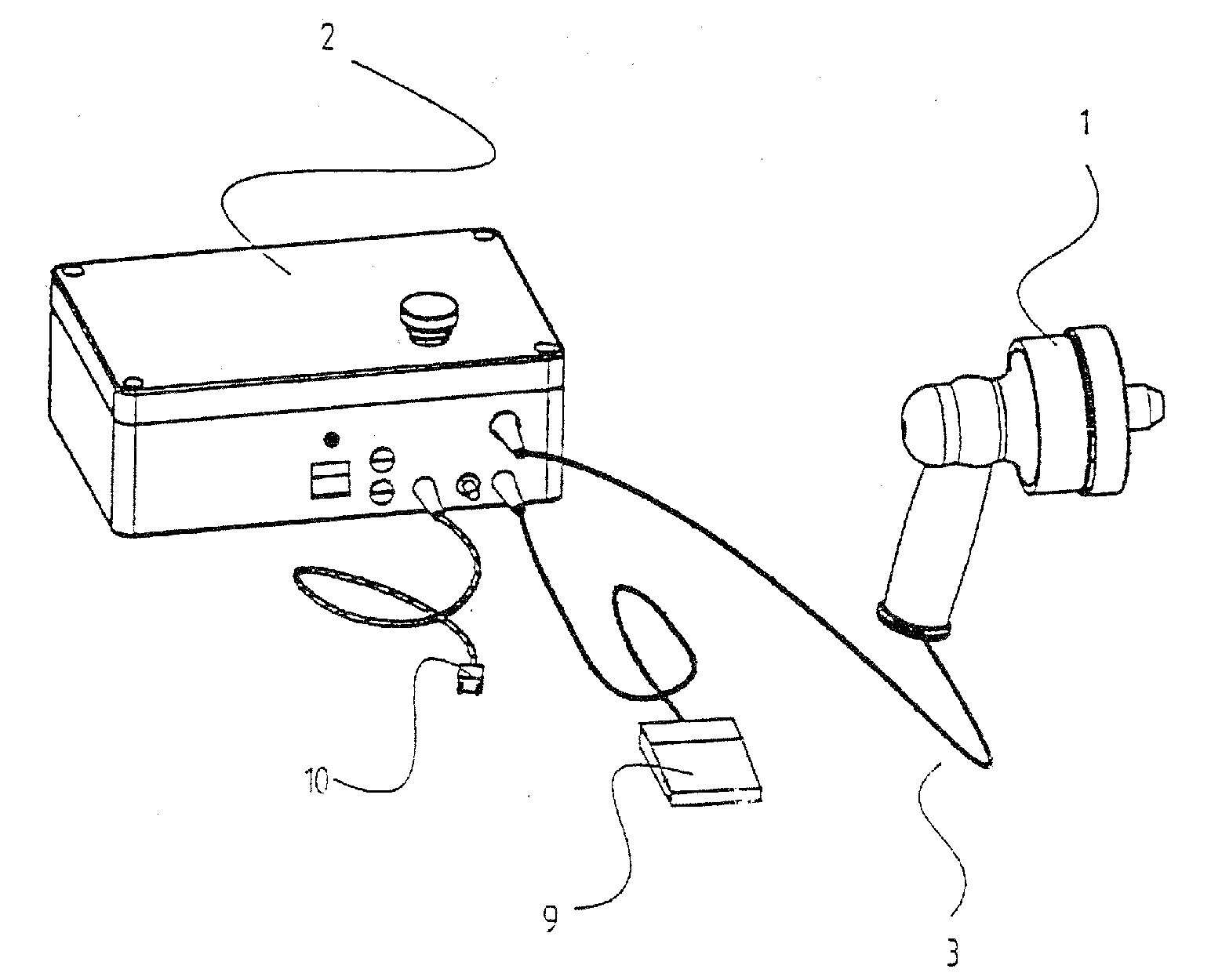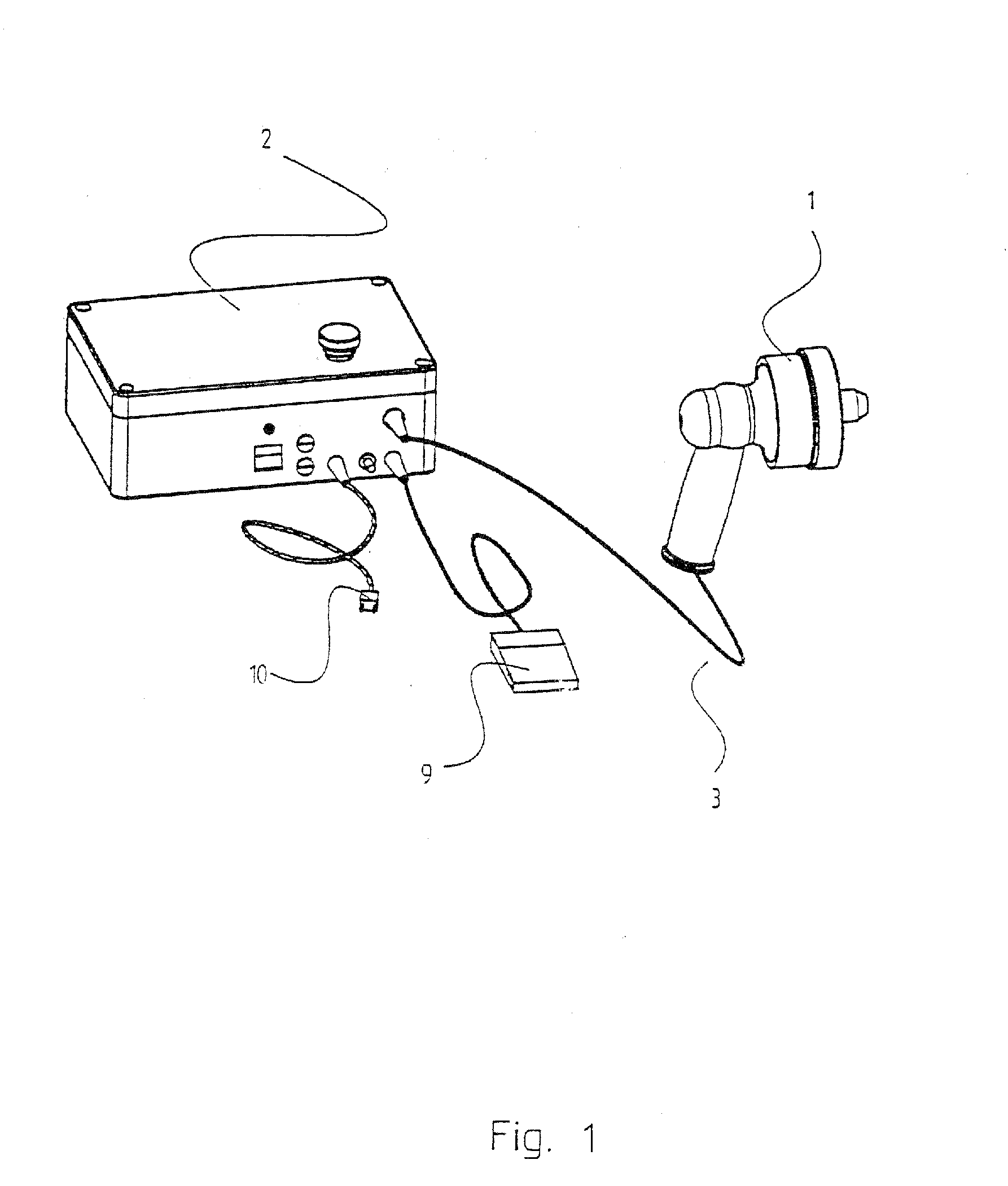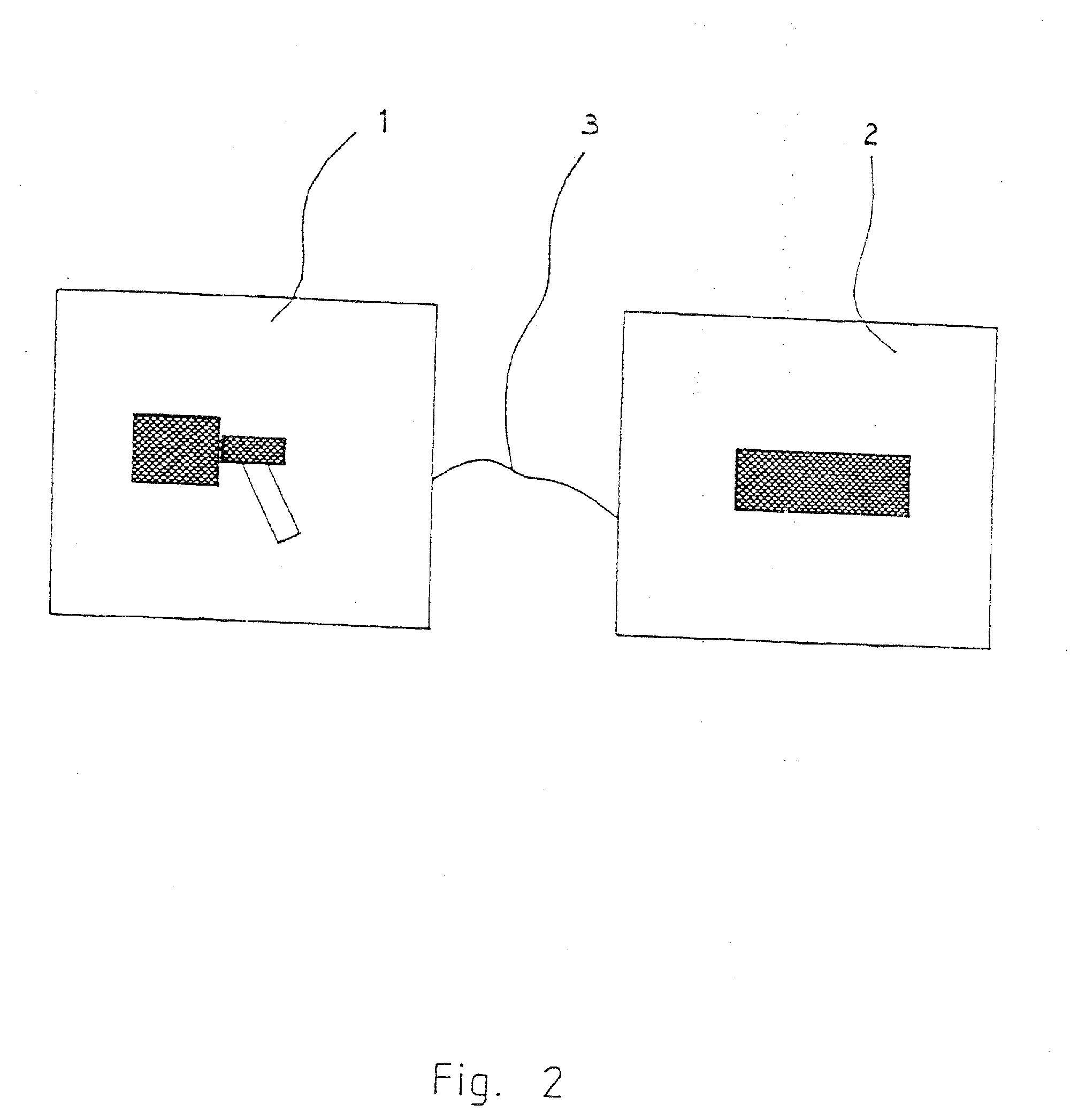Minimally-Invasive Approach to Bone-Obstructed Soft Tissue
a bone marrow and soft tissue technology, applied in the field of minimally invasive approach to bone marrow occlusion, can solve the problems of not knowing the compatibility of the drill-operation device with the mri, and achieve the effects of low magnetic susceptibility, minimal, if any, image distortion or so-called artifacts
- Summary
- Abstract
- Description
- Claims
- Application Information
AI Technical Summary
Benefits of technology
Problems solved by technology
Method used
Image
Examples
Embodiment Construction
[0012]The transformation of electrical energy into mechanical energy can occur by piezoelectric effect, eliminating a magnetic field that is typically produced by conventional electric motors. Additionally, the use of non-magnetic materials can produce an MRI image with minimal distortion.
[0013]The subject driving unit can incorporate a hollow shaft through which an instrument can pass and can be applied to the bone or other tissue being drilled. In a specific embodiment, the driving unit can be separated from the hollow shaft, allowing the hollow shaft to remain in the drilled hole and serve as minimally-invasive access to the respective tissue region.
[0014]The subject invention can also allow the application of so-called spike and Kirschner wires 13. As FIG. 5 shows, those wires can be clamped into the hollow shaft 12 and applied for the respective borings into the chosen tissue areas. Subsequently, the wire clamping can be detached, and the driving unit 1 can be removed together ...
PUM
 Login to View More
Login to View More Abstract
Description
Claims
Application Information
 Login to View More
Login to View More - R&D
- Intellectual Property
- Life Sciences
- Materials
- Tech Scout
- Unparalleled Data Quality
- Higher Quality Content
- 60% Fewer Hallucinations
Browse by: Latest US Patents, China's latest patents, Technical Efficacy Thesaurus, Application Domain, Technology Topic, Popular Technical Reports.
© 2025 PatSnap. All rights reserved.Legal|Privacy policy|Modern Slavery Act Transparency Statement|Sitemap|About US| Contact US: help@patsnap.com



